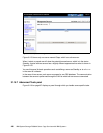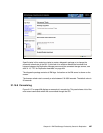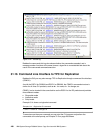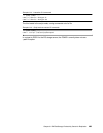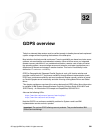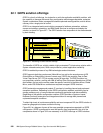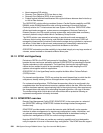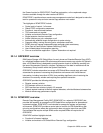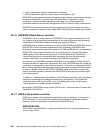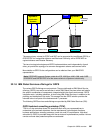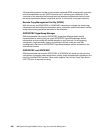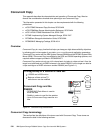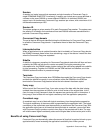504 IBM System Storage DS6000 Series: Copy Services with IBM System z
Near transparent D/R solution
Recovery Time Objective (RTO) less than an hour
Recovery Point Objective (RPO) of zero (optional)
Protects against localized area disasters with a typical distance between sites limited to up
to 100 km fiber distance
The GDPS/PPRC solution offering combines System z Parallel Sysplex capability and ESS,
DS6000, and/or DS8000 Metro Mirror disk mirroring technology to provide a Business
Continuity solution for IT infrastructures that have System z at the core. GDPS/PPRC offers
efficient workload management, system resource management, Business Continuity or
Disaster Recovery for z/OS servers and open system data, and provides data consistency
across all platforms using the Metro Mirror Consistency Group function.
The GDPS solution uses automation technology to provide end-to-end management of
z/Servers, disk mirroring, tape mirroring, and workload shutdown and startup. GDPS will
manage the infrastructure to minimize or eliminate the outage during a planned or unplanned
site failure. Critical data is disk mirrored, and processing is automatically restarted at an
alternate site in the event of a primary planned site shutdown or site failure.
GDPS/PPRC automation provides scalability to insure data integrity at a very large number of
volumes, across hundreds or thousands of Metro Mirror pairs.
32.1.2 PPRC and HyperSwap
Exclusive to GDPS in the PPRC environment is HyperSwap. This function is designed to
broaden the near continuous availability attributes of GDPS/PPRC by extending the Parallel
Sysplex redundancy to disk subsystems. The HyperSwap function can help significantly
reduce the time needed to switch to the secondary set of disks while keeping the z/OS
systems active together with their applications.
GDPS/PPRC V3.2, the HyperSwap function, exploits the Metro Mirror Failover/Failback
(FO/FB) function.
For planned reconfigurations, FO/FB may reduce the overall elapsed time to switch the disk
subsystems, thereby reducing the time that applications may be unavailable to users.
For unplanned reconfigurations, FO/FB allows the secondary disks to be configured in the
suspended state after the switch and record any updates made to the data. When the failure
condition has been repaired, resynchronizing back to the original primary disks requires only
the changed data to be copied, thus eliminating the need to perform a full copy of the data.
The window during which critical data is left without Metro Mirror protection following an
unplanned reconfiguration is thereby minimized.
32.1.3 RCMF/PPRC overview
Remote Copy Management Facility/PPRC (RCMF/PPRC) is the name given to a subset of
the GDPS/PPRC offerings. RCMF/PPRC includes the storage interface management
functions only.
RCMF/PPRC provides panels and code that execute under NetView®, and an operator
interface for easier management of a remote copy configuration in setup, initialization, and
any planned outage operational mode. This provides benefits for businesses looking to
improve their management of PPRC for normal running circumstances.
Note that RCMF/PPRC does not provide any monitoring capability and is not designed to
notify the operator of an error in the remote copy configuration. Thus RCMF does not support



